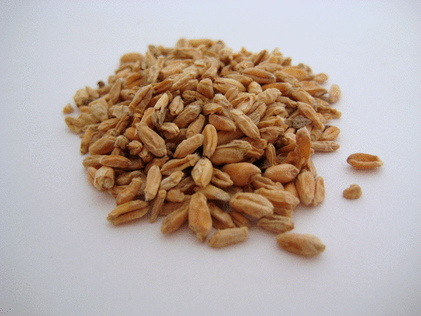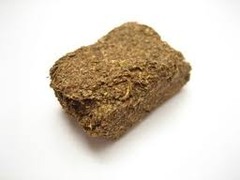Triticum aestivum is the most common species of wheat, that is the most widely cultivated in the world.
Triticum
aestivum 小
麦
Xiǎo mài Common
wheat Family: Gramineae
Triticum aestivum is the most common species
of wheat, that is the most widely cultivated in the world.
浮
小
麦 Fú
Xiǎo Mài
Floating wheat, Immature
wheat grains
These are wheat grains that appear shrivelled because they are harvested early.
FLAVOR: Sweet-salted CHANNELS:
Heart
FUNCTIONS
GROUP: Hemostatic and Astringent
1. Astringent
2. Tone Heart and remove Heat.[1]
INDICATIONS
1. Excessive perspiration, night sweat.[1]
COMBINATIONS
- Deficiency of Heart Blood with Disharmony between
Liver and Spleen:Nourishes the Heart
Blood and calms the Shen, regulates and tonifies the Middle Jiao Wheat
& Jujube- Gan mai da zao wan.
PREPARATIONS:
Boil or powder by crushing after fried.[1]

 神
曲 Shén
qū-"Spirits leaven"
Medicated leaven- Fermented wheat flour + herbs
神
曲 Shén
qū-"Spirits leaven"
Medicated leaven- Fermented wheat flour + herbs
Mixed wheat flour, bran, and several other
herbs, such as aerial parts of Xanthium-Cang
er zi- Cocklebur, Persicaria hydropiper-
La liao cao- Water Smartweed, Prunus armeniaca-
Apricot kernels- Xing ren, juice of Artemisia
annua- Qing hao, Vigna umbellata- Adzuku
bean powder- Chi xiao dou. The mixture is placed into a basket;
and covered with apocynum venetum leaves or paper mulberry leaves. It is kept
warm and left to ferment for a week and taken out when yellow mycelium appears
on the surface. It is then cut into small pieces and dry them in the sun. Medicinally
it is used raw or fried.
FLAVOR: Sweet, Pungent CHANNELS: Spleen,
Stomach
ACTIONS
GROUP: Digestive
and Evacuants
1. Aids digestion, purges worms (if appropriate herbs are added).[4]
INDICATIONS
1. Tightness and distension of the chest and abdomen, indigestion, diarrhea.[4]
COMBINATIONS
- Spleen and Stomach Qi deficiency with stagnation of food and Dampness:
Strengthens the spleen and Stomach, eliminates the Damp Retention and improves
the digestion Ginseng, Dioscorea
& Coix- Zi sheng wan.
PREPARATIONS:
Dosage: 6-15 g. 5-9 g.[4]
